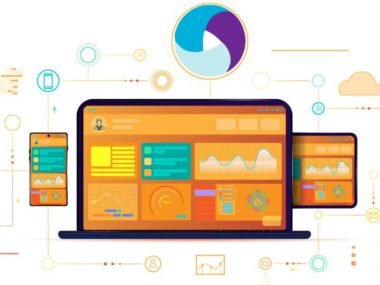Choosing the right salon software is an important decision for salon owners. It can streamline daily operations and improve client management. With many options available, understanding which capabilities and features are most useful for each business will help make an informed decision.
Salon software can simplify booking systems, handle payments, and maintain client profiles. Each software option has different strengths, so exploring various solutions is beneficial. Business owners should check this salon software to find a solution that fits their needs.
Inventory Management
Inventory management is an important part of salon software. It helps track products in stock, preventing both overstocking and running out of supplies. A good system allows salon owners to see what is selling and what needs to be reordered. This guarantees the salon can meet customer demands without wasting money on unsold items.
Some salon software options include alerts when stock levels are low. These notifications help staff keep product levels adequate for daily operations. These tools allow salon staff to focus on other tasks instead of constantly checking inventory.
Additionally, these systems often provide reports on sales trends. This data can guide owners in deciding which products to promote or discontinue. The goal is to streamline operations and boost sales efficiency.
Integration with point-of-sale systems can make the inventory process seamless. When a product is sold, it automatically updates the system, giving an accurate view of what is left in stock. This real-time tracking reduces manual errors and saves time.
User-Friendly Interface
A user-friendly interface is important in salon software. Users should find it intuitive and easy to navigate. Clear menus and a simple layout allow staff to perform tasks quickly. This reduces training time and minimizes errors during daily operations.
Clients also benefit from a straightforward interface. They can book appointments, choose services, and select their preferred stylists without confusion. This improves the overall customer experience, increasing satisfaction and repeat visits.
Customization options can improve usability. The ability for salons to adjust settings to fit their specific needs helps staff work more efficiently. Easy-to-understand visuals and straightforward icons contribute to a seamless user experience.
A software interface needs to be accessible on various devices. This flexibility allows users to operate efficiently on a computer or mobile device.
When evaluating salon software, examining the interface closely can save time and effort. A streamlined design with logical flow guarantees that staff and clients positively interact with the system.
Appointment Scheduling
Appointment scheduling is a key function of salon software. It allows clients to book services conveniently, often through an online system. This feature lets salon staff see all upcoming appointments in one place, making it easier to manage daily operations.
Salons benefit from reduced no-shows through automated reminders sent to clients. This feature helps maintain the schedule and improves customer satisfaction, as clients receive timely reminders for their appointments.
The scheduling system should be easy to navigate for both staff and clients. It should allow salon workers to check available slots and make changes without confusion quickly. This efficiency helps to keep clients happy and the salon running smoothly.
Customer Support
Good customer support is important when choosing salon software. It helps solve issues quickly and keeps the salon running smoothly. A helpful support team can guide users through setup and troubleshooting problems, which is helpful for daily operations.
Software providers that offer various support channels provide flexible options for salons. Reaching support through phone, email, or chat makes it easier to find help when needed. This quick access to assistance can reduce downtime and confusion.
Another factor to think about is the availability of support. A team that offers support during extended hours or even 24/7 is valuable. Salons often operate outside regular business hours, so having help available at different times can prevent disruptions.
Choosing software with a helpful and accessible support team guarantees that staff members can get the needed assistance. Training and learning resources the company provides can also help understand how to use the software effectively. This guidance improves the salon experience for the staff and clients.
Pricing Options
Pricing is an important factor when choosing salon software. Finding a solution that fits within a budget while still providing the necessary features is important.
Some software options offer tiered pricing plans. This allows businesses to select a plan based on their specific needs. Lower tiers often include basic features, while higher tiers provide more advanced tools.
Monthly subscription models are common in salon software. These models offer flexibility, allowing users to pay only for the needed months. This can be beneficial for seasonal businesses or those trying out new software.
Free demos and trials are sometimes available. These options allow users to test the software before committing to a payment plan. It’s a good way to evaluate whether the software meets the business needs.
Customizable pricing plans may also be an option. These plans enable businesses to pay only for the features they use, potentially optimizing cost efficiency. Evaluating needs and comparing different pricing structures can help companies to make informed decisions.
Integration Capabilities
Integration capabilities are an important feature to consider when selecting salon software. These capabilities allow the software to connect with tools and systems a salon might already use. This can streamline operations and save time.
For example, by integrating with accounting software, salons can keep financial records up-to-date without manual data entry. Similarly, connecting with marketing tools can make customer outreach more effective.
Social media integration is another beneficial feature. It can allow clients to book appointments directly through platforms like Facebook and Instagram, making it easier to capture potential customers. This connection can also keep appointment calendars synchronized across different channels.
Another aspect to look for is compatibility with payment processing systems. This can simplify transactions and improve customer experience. Data migration from old systems can also be smoother with good integration capabilities. This makes switching to a new software platform much easier without losing important information.
Conclusion
Choosing the right salon software requires careful planning and consideration. It’s important to look at features that align with the specific needs of a salon. Simple and easy-to-use software helps staff manage appointments and inventory more efficiently.
Factors such as customer support and pricing also play a significant role. Businesses should evaluate the level of support offered and guarantee it fits within their budget. A comprehensive service package can be a great advantage.
Prioritizing software with online booking and inventory management tools can improve customer satisfaction. These features allow clients to book appointments easily. Good inventory tools help keep track of products efficiently.
Ultimately, the perfect salon software should help improve daily operations. A well-chosen system can streamline tasks, benefiting both staff and customers.










